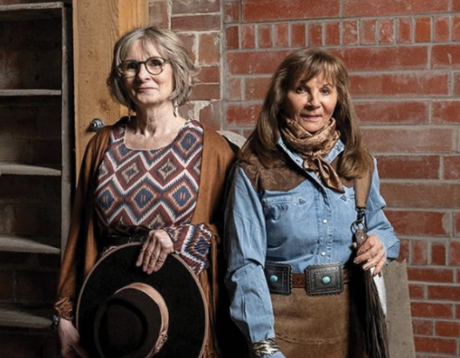Four Men and a Horse
Seabiscuit Carried Two Alberta Jockeys to Immortality
 |
| George Woolf and Seabiscuit Photo courtesy Howard Snyder Remington |
In one of the greatest inspirational stories in American history, an unappreciated horse, a Depression-era millionaire, an elderly horse trainer and a young Canadian jockey came together in an astounding combination of circumstance and talent. And later, into this circle stepped another Canadian jockey, one whose career had gone from strength to strength.
In 1938, Seabiscuit began burning up tracks across the country under the crafty training of Tom Smith, the protection of owner Charles Howard and the skilled and empathetic riding of Alberta jockey Red Pollard.
Howard began campaigning for a one-on-one race against War Admiral, favourite son of Man o’ War. War Admiral was the Triple Crown winner and Horse of the Year in 1937. The Admiral’s owner, millionaire Samuel Riddle, was dismissive of an upstart from the lightly regarded California racing scene. Howard persevered, and finally — with the intercession of Alfred Vanderbilt, owner of Maryland’s Pimlico racetrack — a match race against War Admiral was scheduled for Nov. 1, 1938 at Pimlico.
But Red Pollard would not be riding. On June 23, in his second life-threatening mishap, Pollard had been severely injured in an accident during a warm-up on a horse which he rode as a favour to an acquaintance. His right leg was shattered; doctors doubted he would walk again, let alone ride again.
To replace Pollard, Howard was advised to bring in Pollard’s fellow Canadian and long-time friend, George Woolf. Born and raised in the Alberta town of Cardston, Woolf had learned to ride with his parents about the same time he learned to walk, then to compete on small tracks across southern Alberta and northern Montana.
 |
| This life-size bronze of George Woolf riding Seabiscuit — in what is still considered the Race of the Century — was unveiled at the Remington Carriage Museum in Woolf’s hometown of Cardston, Alta. Photo by Christopher Lowe |
Woolf and Pollard were both 17 years old when they met in Vancouver in 1927. Woolf was a prodigy, and already showing promise of the great career that was to come. By the time he got the call to ride Seabiscuit he was considered to be one of the best jockeys in America, and eventually came to be regarded by some as the best jockey who ever lived. His preternaturally calm demeanor before a race had earned him the nickname “Iceman”.
On race day, Seabiscuit surged ahead of War Admiral immediately,a head, then a length, then two lengths in the lead. Woolf glanced over his shoulder, and seeing War Admiral two lengths back, he glided Seabiscuit over to the rail. The Admiral’s advantage of the rail draw, and his presumed greater starting speed were both nullified in the first 200 yards. Seabiscuit was in the lead around the first turn. Then, War Admiral started to make his move down the backstretch, narrowing the gap with every stride, pulling even before the start of the last turn. Running side by side as one horse, the two champions entered the far turn, matching stride for stride for more than a quarter mile.
Rounding the final curve, Woolf looked at War Admiral,and saw his eye rolling in its socket, and then the Admiral’stongue shot sideways out of his mouth. “The ‘Biscuit has broken him,” thought Woolf. With a shout of “So long,Charley!” to the Admiral’s jockey Charley Kurtsinger, Woolf pressed his face to Seabiscuit’s neck and called for all his horse could give.
Down the stretch War Admiral fell behind a head, a length, two lengths, three lengths. War Admiral ran by far his fastest time by four full lengths. That evening the sports writers voted Seabiscuit Horse of the Year for 1938.
In the winner’s circle, the NBC announcer propped his microphone on Seabiscuit’s shoulder. George Woolf bent to it and said: “I wish my old pal Red had been on him instead of me. Seeya, Red.” Later, an envelope arrived at Red Pollard’s hospital room in Massachusetts. It was from George Woolf. Inside was$1,500 — half of the winning jockey’s purse.
On July 17, 2010, a life-size bronze statue entitled So Long,Charley! was unveiled on the grounds of the Remington Carriage Museum in George Woolf’s hometown of Cardston. Created by Lethbridge artist Don Toney and commissioned by Cardston are a rancher Jack Lowe, it depicts George Woolf and Seabiscuit in the 1938 Race of the Century, at the precise moment when Woolfcalled out his now-famous phrase.
And still they race on, through history, four men and a horse,on their run to immortality.
Howard Snyder is a mountain climber and the author of The Hall of the MountainKing. He and wife Michele live in Cardston, Alta. Howard is the managerof the Remington Carriage Museum.














